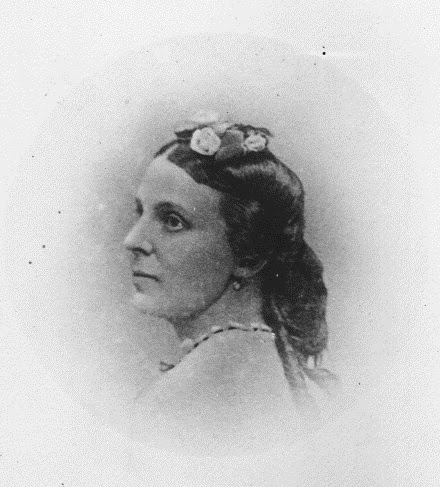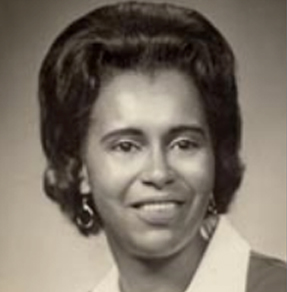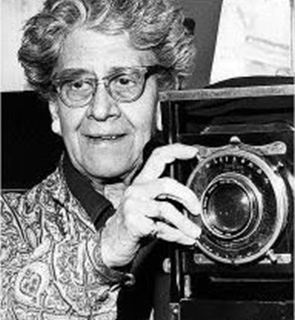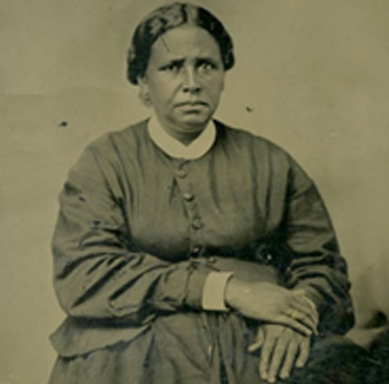From immigrant textile mill worker to Ivy League student to pioneering New Bedford educator, Laurinda C. Andrade (1899-1980) overcame barriers of tradition, poverty, language, and discrimination to establish the first high school Portuguese language department in the United States at New Bedford High School.
Courage. Determination. Perseverance. These are the qualities that Laurinda C. Andrade (1899-1980) showed throughout her transition from the Azores to the United States, where she progressed from textile mill worker to Ivy League student to pioneering New Bedford educator. Overcoming barriers of tradition, poverty, language, and discrimination, Laurinda founded the first high school Portuguese language department in the United States at New Bedford High School.
Laurinda was born on Terceira, Azores, to Maria and Antonio Caetano de Andrade in 1899. Her father was committed to the education of his children, so he arranged for Laurinda to be tutored and then to attend public schools on Terceira. In 1917, at the age of 17, Laurinda left Terceira and crossed the Atlantic by ship to find employment and education in the United States. Placed under the protection of an elderly couple on the ship, Laurinda arrived in Massachusetts with no family, friends or money. She first lived in East Taunton with a guardian and briefly worked as a speeder tender in a mill there until she moved to New Bedford, where she would live and work for much of her life.
Like many Portuguese immigrants in New Bedford at the time, Laurinda lived in tenements and worked in textile mills. In the tenements, Laurinda formed new friendships with various landladies and other mill workers. Tia Emilia das Flores was her landlady at 122 Acushnet Avenue; Senhora Fortunata was the landlady at her next tenement on the same avenue; Senhora Albertina was her landlady at 24 Sherman Street. These women and their boarders helped to nurse Laurinda back to health from tuberculosis, and she in turn took care of them during the 1918 influenza. For about seven years, from 1917 until early 1924, Laurinda worked in New Bedford’s factories, including Old City Mill, Acushnet Mill, Sharp Mill, and Booth Mill. At one mill, Laurinda walked out with another worker in protest of unfair treatment of Portuguese women by the male supervisor. At Booth Mill, her final job as a mill worker, Laurinda was able to work in sunlight near windows, on fine cotton speeders.
On February 11, 1924, at age 24, with the support of her landlady Senhora Albertina, Laurinda left factory work and became a full-time student at New Bedford High School. Despite her age and a language barrier, Laurinda excelled in all subjects, with support of private English lessons from Miss Mary Magnett. Mr. Edwin Whitmarsh, New Bedford High School’s History Department Head, encouraged Laurinda to apply to Pembroke College, then the women’s college at Brown University, and offered financial assistance. New Bedford High School Principal Mr. Williams met personally with the Pembroke College Dean to advocate for her. Laurinda was accepted to Pembroke College, graduated from New Bedford High School in June of 1927, and entered Pembroke that September. In her autobiography, Laurinda recalls, “Evidently, neither my age nor my background presented any drawback to my natural integration into the various groups of young college women. I was more than fully accepted and made to feel perfectly at home with all of them.” In fact, many of her classmates looked up to Laurinda as an older and wiser woman. Even with a back injury during her senior year that forced her to take final exams in the college infirmary, Laurinda graduated on schedule from Pembroke College of Brown University on June 15, 1931. The following is an excerpt from the 1931 Pembroke College yearbook Brun Mael:
Fourteen years ago there landed on these shores a young girl, poor, friendless, and with little English at her command. She had come to earn money to finish her education at the Normal School at home. It took a long time to earn that money, and when she had, she found she wanted to stay in America to study. Now she is finishing college – five languages at her command, a distinguished record behind her, a glorious future ahead of her, and scores of friends who reverence the daring and superb courage that enabled her to do it. (23)
After graduation, in the midst of the Depression, Laurinda was able to find jobs in fields that were dominated by males. She first was an editor for a Portuguese newspaper in Newark, New Jersey. Then, she became the first woman secretary to the Portuguese Envoy, Dr. Joao A. de Bianchi, in Washington, D. C. With close ties to New Bedford, Laurinda knew of the campaign back home to teach the Portuguese language at New Bedford High School. By 1941, with the support of the local Portuguese newspaper and Portuguese-American citizens, the New Bedford School Committee voted to include Portuguese as a language offering at the high school. On December 15, 1941, Laurinda was hired to teach in New Bedford Public Schools, to begin at New Bedford High School on January 26, 1942.
Laurinda began teaching one English, two French and two Portuguese classes. The 1942 enrollment at New Bedford High School was well over 2,000 students, with about one third of Portuguese ancestry. Portuguese was introduced as an elective for grades 11 and 12 and soon became a popular choice. By the following September, two more Portuguese classes were added. By 1943, Laurinda was teaching six very large Portuguese classes. At first, Laurinda experienced organized resistance against her efforts to expand interest in the Portuguese language. At the time, many colleges did not accept Portuguese as a foreign language entrance requirement. Eventually, as many students going to college chose to study Portuguese, colleges began to recognize and accept the Portuguese language. In 1955, Laurinda was able to establish the first Portuguese language department in a United States high school at New Bedford High School, and she became the department’s first director. This new department gave more flexibility and expansion to Portuguese language courses. In 1960, beginning Portuguese was offered to New Bedford’s ninth graders in its three junior high schools. New Bedford had now taken the lead by extending the study of the Portuguese language to four years of continued instruction.
At the same time that Laurinda was promoting Portuguese language in the schools, she formed an organization to advocate for Portuguese language and culture in the community. She founded the Portuguese Educational Society in 1944 to promote the study of Portuguese by offering scholarships, to act as an information center for Luso-related topics, and to promote cultural exchange between the United States, Portugal, and Brazil. Laurinda herself continued her studies during summers at Columbia University, where in 1948 she earned a master’s degree with an emphasis on Brazilian literature.
After 25 years of teaching at New Bedford High School, Laurinda retired in 1966. Her advancement of the Portuguese language and culture allowed thousands of New Bedford High School students to honor the Portuguese heritage that has enriched New Bedford for well over a century. Dr. Celia Martins Cordeiro, visiting assistant professor of Spanish and Portuguese at Bridgewater State University, added, “She did make a huge difference on Portuguese-American society leading by example, having other women follow her . . . and accomplishing together a more open-minded vision regarding the role of women in U.S. society.”
Ann O’Leary
Information from
- Andrade, Laurinda C. The Open Door. Reynolds-DeWalt, 1968.
- Brun Mael. Pembroke College, 1931.
- Da Silva, Lurdes C. “Honoring a Portuguese-American Trailblazer, Feminist.” The Herald News, 21 Sept. 2018, http://www.heraldnews.com/news/20180921/honoring-portuguese-american–trailblazer-feminist.
- Library of Congress. “Laurinda C. Andrade.” Portuguese Immigrants in the United States, 15 July 2010, https://www.loc.gov/rr/hispanic/portam/landrade.html.
![[Laurinda Andrade], c. 20th century, Photograph, Courtesy of Reynolds-DeWalt Photograph of Laurina Andrade - an older woman with her dark hair pulled back. She is wearing a white shirt and a jacket, and holding a pair of glasses.](https://historicwomensouthcoast.org/wp-content/uploads/2019/04/Laurinda-Andrade-261x261.jpg)




